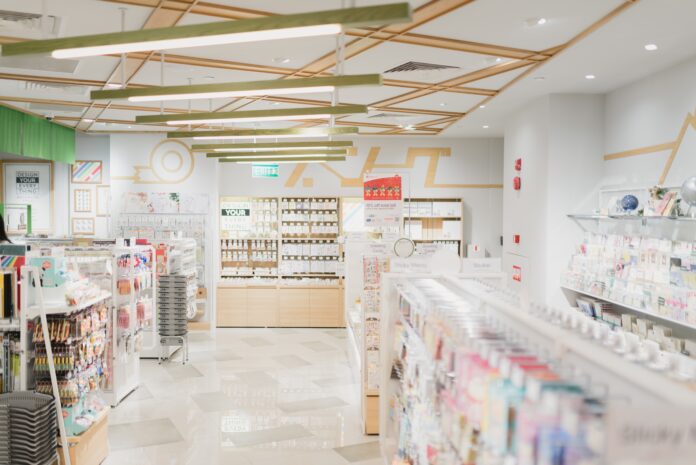Enteric coating is a pharmaceutical technique that involves applying a special coating to oral medications to protect them from the acidic environment of the stomach and ensure targeted release in the intestines. This technique plays a vital role in improving drug delivery and enhancing the efficacy of medications. By providing a barrier against gastric acid, enteric coating enables drugs to bypass the stomach and reach the desired site of action in the intestines, where absorption and effectiveness are optimized.
The primary purpose of enteric coating is to protect the active ingredients of medications from the harsh acidic environment of the stomach. Stomach acid can degrade certain drugs, rendering them less effective or even inactive before they have a chance to exert their therapeutic effects. Additionally, some medications may cause irritation or damage to the stomach lining, leading to adverse side effects. Enteric coating acts as a shield, preventing direct contact between the drug and gastric acid, thus preserving its integrity and reducing the risk of stomach-related complications.
Enteric coating is typically composed of polymers that are resistant to stomach acid but dissolve or become permeable in the relatively neutral pH environment of the intestines. These polymers form a protective layer around the drug, effectively sealing it and preventing premature release in the stomach. The coating remains intact as the medication passes through the stomach, but once it reaches the intestines, where the pH is higher, the coating dissolves or becomes porous, allowing for the controlled release of the drug.
One of the key benefits of enteric coating is its ability to target specific regions of the gastrointestinal tract for drug release. By bypassing the stomach and delivering medications directly to the intestines, enteric coating ensures that the drug is released in the region where it is most needed. This targeted release is particularly important for drugs that are sensitive to gastric acid or require specific conditions in the intestines for optimal absorption.
Another advantage of enteric coating is its ability to modify the release profile of medications. Depending on the desired therapeutic effect, drugs can be formulated with enteric coatings that facilitate immediate release, delayed release, or extended release. Immediate-release enteric-coated tablets dissolve quickly once they reach the intestines, providing a rapid onset of action. Delayed-release coatings, on the other hand, are designed to release the drug after a specific period of time or upon reaching a specific part of the intestines. This allows for better control of drug release and ensures that the medication is delivered at the optimal time. Extended-release formulations, achieved through enteric coating, enable a slow and sustained release of the drug over an extended period, reducing the frequency of dosing and improving patient compliance.
Enteric coating is particularly beneficial for medications that are prone to causing gastric irritation or have a narrow absorption window. For instance, nonsteroidal anti-inflammatory drugs (NSAIDs) such as aspirin or ibuprofen can cause stomach irritation and ulcers. Enteric coating helps protect the stomach lining from direct contact with these drugs, reducing the risk of adverse effects. Similarly, certain drugs, such as pancreatic enzyme supplements or certain antibiotics, are most effective when released in the alkaline environment of the intestines. Enteric coating ensures that these drugs are delivered to the intestines intact, maximizing their therapeutic potential.
Furthermore, enteric coating can enhance the stability and shelf-life of medications. Some active ingredients are sensitive to moisture or atmospheric conditions, and their efficacy may deteriorate over time. By providing a protective barrier, enteric coating helps preserve the stability and potency of the drug, ensuring that it remains effective throughout its shelf-life.
Enteric coating is not limited to oral medications alone. It can also be applied to other dosage forms, such as capsules, pellets, and granules. In these cases, the enteric-coated particles or beads are typically filled into capsules or incorporated into multi-particulate formulations. This allows for customized drug release profiles and provides flexibility in drug delivery options.
In conclusion, enteric coating plays a crucial role in enhancing drug delivery and protecting active ingredients. By shielding medications from the acidic environment of the stomach and ensuring targeted release in the intestines, enteric coating improves the efficacy and safety of oral medications. With its ability to provide targeted drug release, modify release profiles, reduce gastric irritation, and enhance stability, enteric coating has become a valuable tool in the pharmaceutical industry. By harnessing the potential of enteric coating, researchers and pharmaceutical companies continue to develop innovative formulations that optimize drug delivery and improve patient outcomes.
Acid Resistance:
Enteric coating provides a protective barrier that withstands the acidic environment of the stomach, preventing the degradation of active ingredients by gastric acid.
Targeted Drug Delivery:
Enteric coating ensures that medications reach the desired site of action in the intestines, where absorption and effectiveness are optimized.
Controlled Release:
Enteric-coated formulations can be designed to provide immediate release, delayed release, or extended release of medications, allowing for better control of drug release and therapeutic effects.
Gastric Protection:
Enteric coating helps protect the stomach lining from direct contact with medications that may cause irritation or damage, reducing the risk of stomach-related complications.
Improved Bioavailability:
By bypassing the stomach and delivering drugs directly to the intestines, enteric coating enhances the bioavailability of medications that are sensitive to gastric acid or require specific conditions for absorption.
Reduced Side Effects:
Enteric coating can minimize gastric irritation and adverse effects associated with certain medications, improving patient tolerance and compliance.
Customized Formulations:
Enteric coating can be applied to various dosage forms, including tablets, capsules, pellets, and granules, allowing for flexibility and customization in drug delivery options.
Stability and Shelf-Life Enhancement:
Enteric coating protects active ingredients from moisture, atmospheric conditions, and other factors that may affect their stability, preserving the potency and shelf-life of medications.
Enhanced Patient Experience:
Enteric-coated formulations often provide a smoother swallowing experience, as they are less likely to cause a bitter taste or induce discomfort in the stomach.
Expanded Therapeutic Applications:
Enteric coating has broad applications across multiple therapeutic areas, including gastrointestinal disorders, pain management, cardiovascular diseases, and more. It enables the development of innovative drug formulations to address specific patient needs.
These key features collectively contribute to the significant role of enteric coating in pharmaceutical formulations, improving drug delivery, patient outcomes, and the overall efficacy of medications.
Enteric coating is a fascinating area of pharmaceutical technology that goes beyond its key features to encompass various aspects related to its development, applications, and impact on drug delivery systems. This advanced coating technique has revolutionized the field of pharmaceuticals, offering numerous advantages and opportunities for improving patient care and treatment outcomes.
The development of enteric coatings requires a thorough understanding of the physicochemical properties of the drug and the desired release profile. Formulators carefully select the appropriate polymer materials to achieve the desired protective and controlled-release effects. Commonly used polymers for enteric coating include cellulose acetate phthalate (CAP), hydroxypropyl methylcellulose phthalate (HPMCP), and methacrylic acid copolymers (Eudragit®). These polymers exhibit pH-dependent solubility characteristics, making them ideal for enteric coating applications.
One of the critical considerations in enteric coating formulation is the selection of a suitable plasticizer, which influences the flexibility and permeability of the coating. Plasticizers such as triethyl citrate, dibutyl sebacate, and polyethylene glycol are commonly used to optimize the film-forming properties and ensure the proper functioning of the coating.
The coating process itself involves several steps, including mixing the coating materials, preparing the coating suspension, and applying it to the drug substrate using various techniques such as pan coating, fluidized bed coating, or spray coating. Each method offers unique advantages and challenges, requiring careful control of process parameters such as coating thickness, drying conditions, and coating uniformity to ensure consistent quality and performance of the coated products.
Enteric coatings find wide applications in the pharmaceutical industry, ranging from oral medications to specialized formulations. For instance, enteric-coated aspirin has become a popular choice for individuals who require long-term antiplatelet therapy while minimizing the risk of gastric irritation or ulcers. This formulation allows the drug to bypass the stomach and release in the intestines, where it can exert its desired effects without causing harm to the stomach lining.
Furthermore, enteric coatings are utilized in the development of delayed-release formulations. Delayed-release enteric-coated tablets are designed to release the medication after a specific time or upon reaching a particular location in the gastrointestinal tract. This feature is particularly advantageous for drugs that require targeted delivery to specific regions of the intestines or for those with a narrow absorption window. By carefully selecting the appropriate enteric coating materials and optimizing the release profile, formulators can design customized drug formulations that meet the specific needs of patients.
In addition to its therapeutic applications, enteric coating has also found utility in the field of nutraceuticals and dietary supplements. Enteric-coated probiotics, for example, protect the live microorganisms from the harsh acidic environment of the stomach, ensuring their viability and effectiveness as they reach the intestines. This technology allows for the delivery of probiotics to the targeted site, enhancing their survival and potential health benefits.
Enteric coating has also made significant contributions to pediatric medicine. Children often have difficulty swallowing tablets or capsules, and enteric-coated formulations provide a solution by improving the palatability and ease of administration. By minimizing the bitter taste or discomfort associated with certain medications, enteric coatings make it easier for children to comply with their prescribed treatments.
Moreover, the utilization of enteric coatings extends beyond conventional pharmaceuticals. It has been explored in other industries, such as the agricultural sector, where enteric-coated formulations have been developed to improve the controlled release of pesticides and fertilizers. These coatings help protect the active ingredients from environmental factors and optimize their release for enhanced efficacy and reduced environmental impact.
The field of enteric coating continues to evolve with ongoing research and development efforts. Scientists are exploring innovative coating materials, such as polysaccharides derived from natural sources, to enhance the biocompatibility and sustainability of enteric coatings. Additionally, advances in nanotechnology have opened up new possibilities for enteric coating, allowing for precise control over drug release and targeting through the use of nanoscale particles and structures.
In conclusion, enteric coating is a sophisticated pharmaceutical technology that offers numerous advantages in drug delivery systems. Its protective properties shield medications from the acidic environment of the stomach, ensuring targeted release and improved bioavailability. The controlled-release capabilities of enteric coatings enable precise timing of drug delivery, optimizing therapeutic effects and patient outcomes. With its broad applications, enteric coating has transformed the pharmaceutical landscape, providing solutions for gastric irritation, enhancing pediatric medicine, and expanding possibilities in various industries. As researchers continue to explore new materials and techniques, the future of enteric coating holds even greater potential for advancements in drug delivery and patient care.














